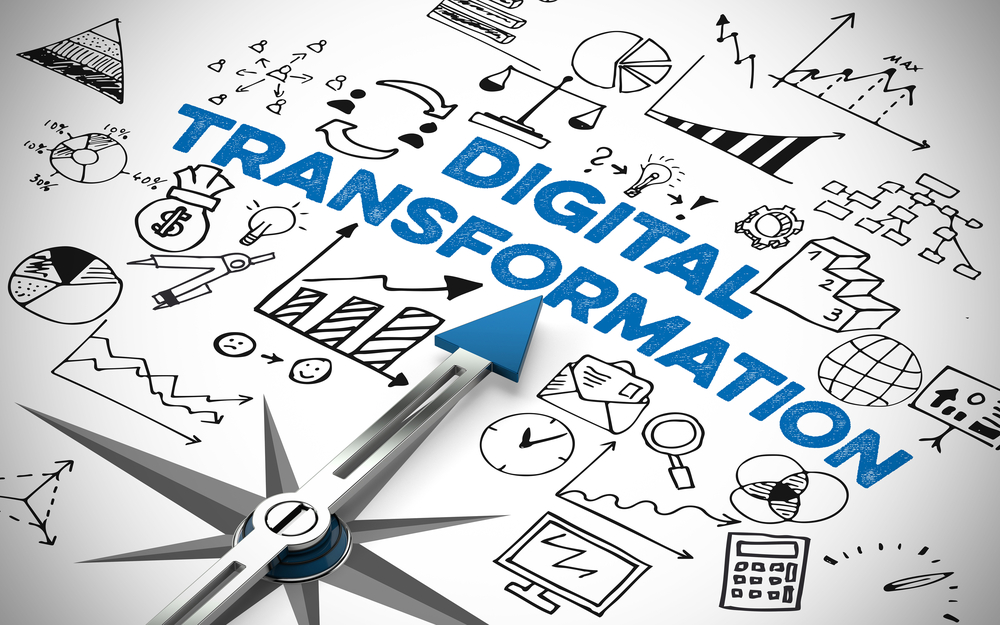Digital transformation is of utmost importance in the business world with major impact in all sectors. Different terms are used to refer to transformations in organisations that are driven by new IT/IS solutions and trends. Currently, enablers of digital transformations include novel delivery models (e.g., cloud computing), pervasive computing (e.g., Internet of Things, cyber-physical systems), mobile computing, social media, as well as new tools and methods to exploit data (e.g., business analytics, machine learning).
Allowing the sensing, collection, management, allocation, distribution, and use of information is fostering business transformation with positive consequences on tasks, information flows, knowledge, culture, and people.
I often hear about the “amazing,” “fabulous,” “terrific,” and “incredible” projects under way with the potential to “revolutionise” companies and “disrupt” whole industries. However, when probed for details, a vast number of companies do not have a clear vision or idea about the process, but start on the journey hoping that things will fall in place sooner or later.
To replace this confusion with some clarity, I have distilled my observations and experiences into ten myths about digital transformation — each of which has a corresponding reality. If you understand these myths, you’ll be less likely to fall prey to the hype around digital transformation and be more aware of how arduous the process really is.
Myths and realities
Myth : Technology alone and itself will enable digital transformation.
Reality: The people and the organisational structure and culture are the differential elements to have a successful digital transformation initiative. A culture of openness to change will greatly enhance the initiative’s chances of success.
Myth : Top Management is key group for its successful implementation
Reality: Any project, of a significant size, can only succeed when the entire organisation is behind it, not just the top management. Therefore, valuable bottom-to-up initiatives of supervisors, middle managers or employees emerge as a key complement to their implementation and consolidation.
One example is the reverse mentoring already implemented in some companies and where millennials train managers on digitalisation and social networks.
Myth : Digitisation is more related to new business models and technologies than to changes in leadership.
Reality: It is no longer possible for a few managers to successfully lead and make the most decisions. The brutal and accelerated disruption of many business models requires the entire workforce with an entrepreneur mentality to seek opportunities from each of their roles. For this, a leadership that inspires and accompanies this collective change of approach is a must.
Myth : Digitisation mainly involves implementation of new processes.
Reality: Peter Drucker once said, “culture eats the strategy for breakfast”. And there is more and more business evidence that having a good employee experience is the basis for getting an excellent and profitable customer experience. Therefore, before modifying the processes we must focus on good management of our team’s change. Maintain the positive essence that led us to the current state, evolve the mentality to remain competitive and with the involvement of employees to be more solid and sustainable.
Myth : It is enough to convince and involve a small percentage of the organisation.
Reality: Experts have shown that only 10% of the workforce is required to “dynamise” a change from the beginning: a group of internal “influencers” with credibility and at diverse levels and areas.
However, to have a strategic and irreversible impact, all departments and a large majority of employees need to be enthusiastic about this in the medium term. And for this, a good mix of intelligence, honesty and resilience will be needed to overcome the difficulties that are expected to come.
Myth : Every company should digitally transform.
Reality: Digital transformation is not a software upgrade or a supply chain improvement project. It’s a planned digital shock to what may be a reasonably functioning system. For example, to launch a digital transformation of business processes, it’s necessary to purposefully model those processes with tools that enable creative, empirical simulations. Think, for example, of the software programs that enable business process modeling and business simulations.
So, as a first step to digitally transforming your processes, you need to honestly assess if your company can create digital models that simulate the nuances inherent in its procedures. Simply put, the question is this: Can my company model its existing processes? Many companies cannot. That’s no crime. But that means, in all likelihood, that you cannot easily digitally transform all of those processes.
Myth : Profitable companies are the most likely to launch successful digital transformation projects.
Reality: If things are going well — defined crassly as employee and shareholder wealth creation — then the chances of transforming anything meaningful are quite low.
Failing companies are much more motivated to transform themselves, simply because they need to change something — if not everything — quickly. Successful companies, especially if they’re public companies, are understandably cautious about change. Think about it: How many successful companies — without market duress — have truly transformed their business models?
Myth : We need to disrupt our industry before someone else does.
Reality: Disruptive transformation seldom begins with market leaders whose business models have defined their industry categories for years.
Historically, industry disruptors have often been startups making bold bets on old industries. Examples include Airbnb (hospitality), Uber and Lyft (transportation), Amazon (books, retail), and Netflix (entertainment).
Does this mean there’s no possibility for industry leaders to disrupt themselves? No. But let history serve as a helpful reminder: Disruption seldom comes from established companies with consistent, profitable revenue streams.
Myth : Executives are hungry for digital transformation.
Reality : The number of executives who really want to transform their companies is relatively small, especially in public companies.
Digital transformation requires strong support from upper management. And while the concept of digital transformation can be sold up the management chain, simply selling the concept isn’t enough. Transformations require overt, continuous support from the senior management team to succeed.
Myth : In the digital transformation it is possible to obtain relevant results in the short term.
Reality : Digitisation requires a sense of urgency and, at the same time, it is not usually easy to obtain great tangible results in a few months as in any complex transformation.
Building a good internal and external story, keep the focus, despite foreseeable ups and downs, gaining support, sharing leadership, resilience and having some luck will be key factors to achieve significant progress in the medium term.
Digitisation is unstoppable and affects all industries. It is also a revolution that shakes the historical ranking of companies and industries worldwide.
Citizens are often more advanced than companies in the use of technological advances and new forms of relationship.
We must move quickly since this has only just begun as confirmed by the leading experts. Since we cannot put doors to the forest, let’s take advantage of the great opportunities it generates to compete successfully in this global and constantly changing world.
As Heraclitus said — ‘The only thing that is constant is change’.










Discussion about this post